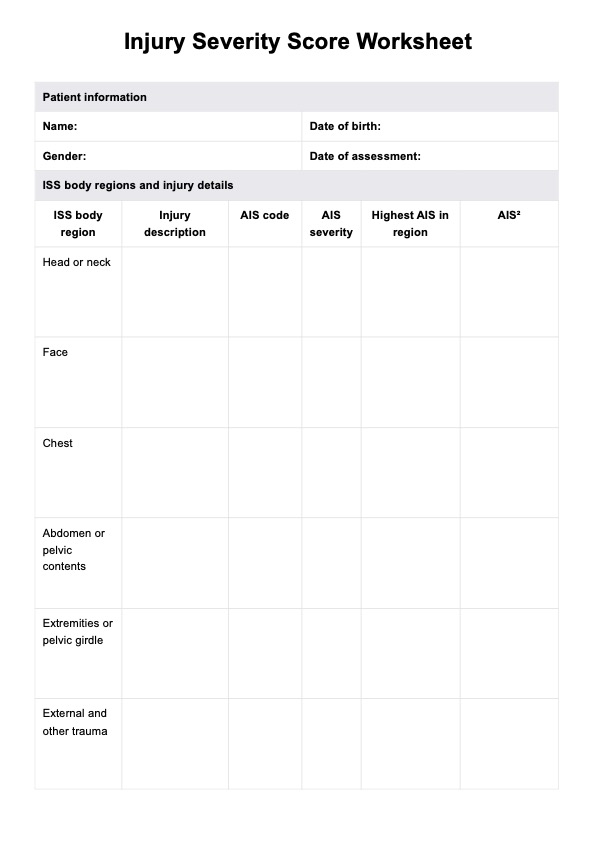The ISS measures the overall severity of injuries sustained by a patient, calculating a numerical value based on the most severe injuries across different body regions to predict treatment outcomes and mortality.

Injury Severity Score Worksheet
Explore the use of the Injury Severity Score (ISS) Worksheet for assessing trauma severity in patients. Access the free PDF now.
Use Template
Injury Severity Score Worksheet Template
Commonly asked questions
The ISS is calculated by squaring the highest Abbreviated Injury Scale (AIS) scores from each of the three most severely injured body regions and then summing these squares, providing a score ranging from 1 to 75.
Yes, the ISS is often used to estimate the length of hospital stay, as higher scores generally correlate with longer recovery times and more extensive medical care.
EHR and practice management software
Get started for free
*No credit card required
Free
$0/usd
Unlimited clients
Telehealth
1GB of storage
Client portal text
Automated billing and online payments











